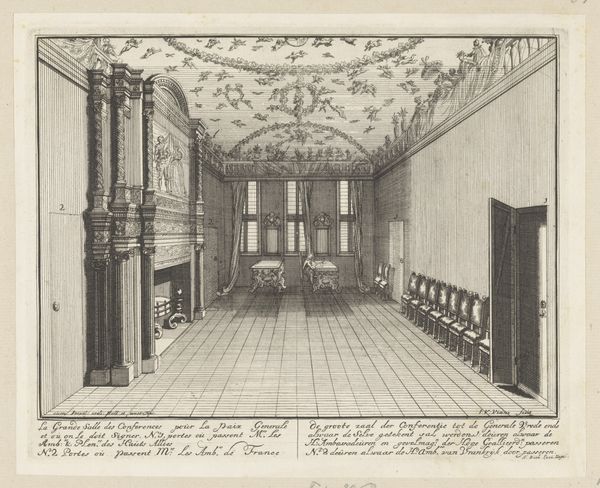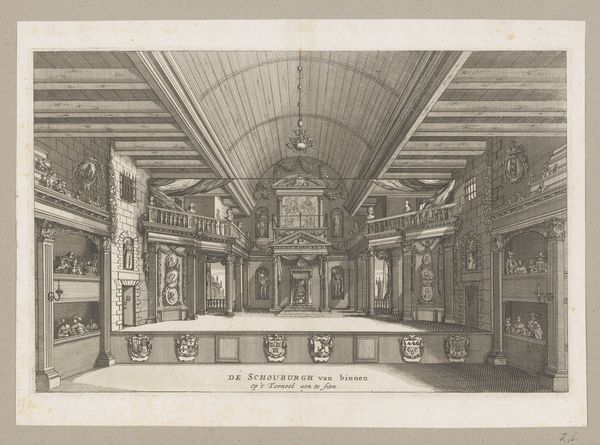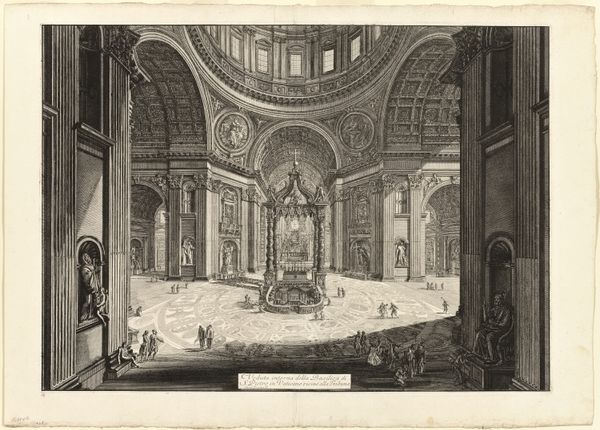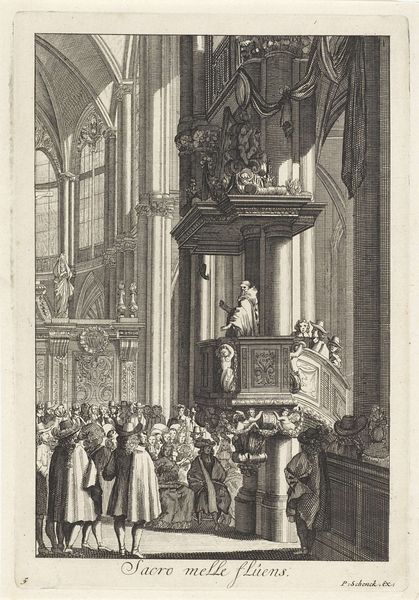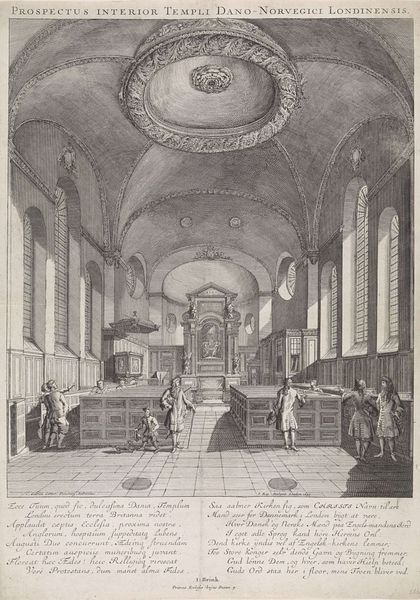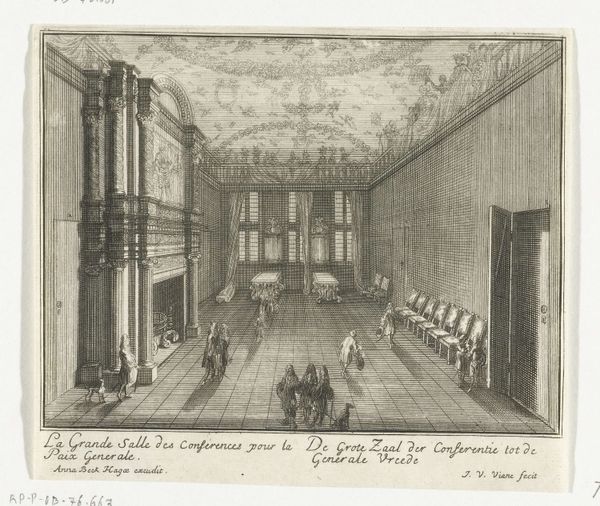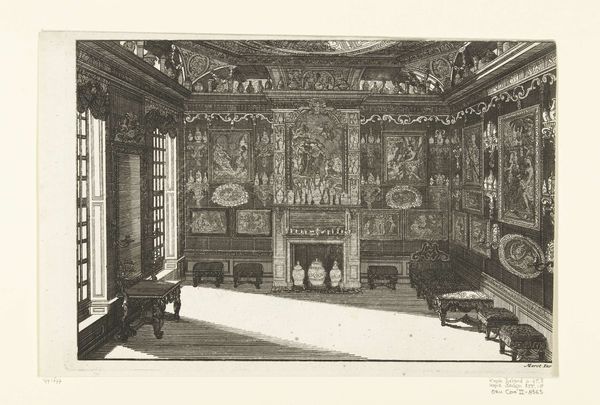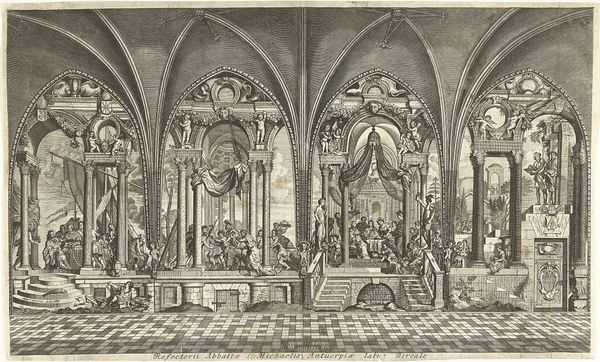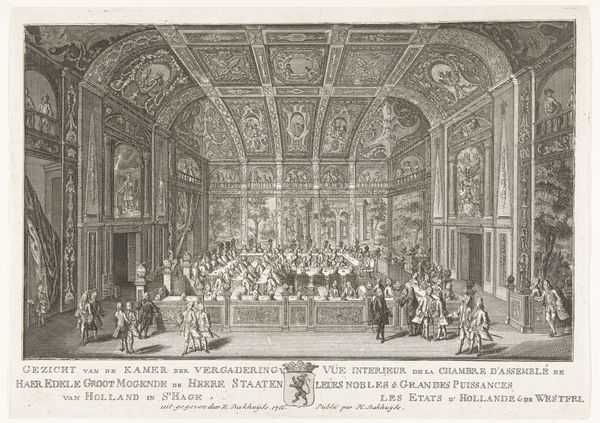
Interieur van de Rooms Katholieke schuilkerk op de Boommarkt te Amsterdam 1769
0:00
0:00
Dimensions: height 283 mm, width 373 mm
Copyright: Rijks Museum: Open Domain
Editor: Here we have "Interior of the Roman Catholic Church on Boommarkt in Amsterdam" from 1769 by Caspar Jacobsz. Philips, created as an engraving. It's interesting how detailed the artist made the interior, even with the limitations of the print medium. I'm curious, what stands out to you in this piece? Curator: What immediately grabs me is the context of a "hidden church." This engraving documents a Catholic church operating discreetly in 18th-century Amsterdam, a period and place where religious freedoms were curtailed. How does this visual representation, in your opinion, challenge or subvert the dominant narrative of the time? Editor: Well, showing the opulence of the interior feels like a quiet act of defiance. The details, like the organ and the statues, suggest a community that refuses to be invisible, even if they are practicing in secret. Curator: Exactly. It is resistance through beauty, wouldn't you say? Philips documents this clandestine space, revealing the complexities of identity and belief in a society grappling with shifting power dynamics. Look at the people depicted – are they merely observers, or are they active participants in this act of preservation? Editor: That's a great point. They almost seem to be inviting us, the viewers, into their secret. By creating this artwork, Philips makes the invisible, visible. Curator: Indeed. And how does that relate to current debates about representation and marginalized voices in art and society? Editor: It reminds me that even subtle acts of documentation can have profound impacts on how we understand history and advocate for inclusivity today. I'm going to rethink what it meant to be visible in that time, and how artists helped in reshaping society's views. Curator: Precisely. And hopefully, consider how we participate in similar reshaping now.
Comments
No comments
Be the first to comment and join the conversation on the ultimate creative platform.



